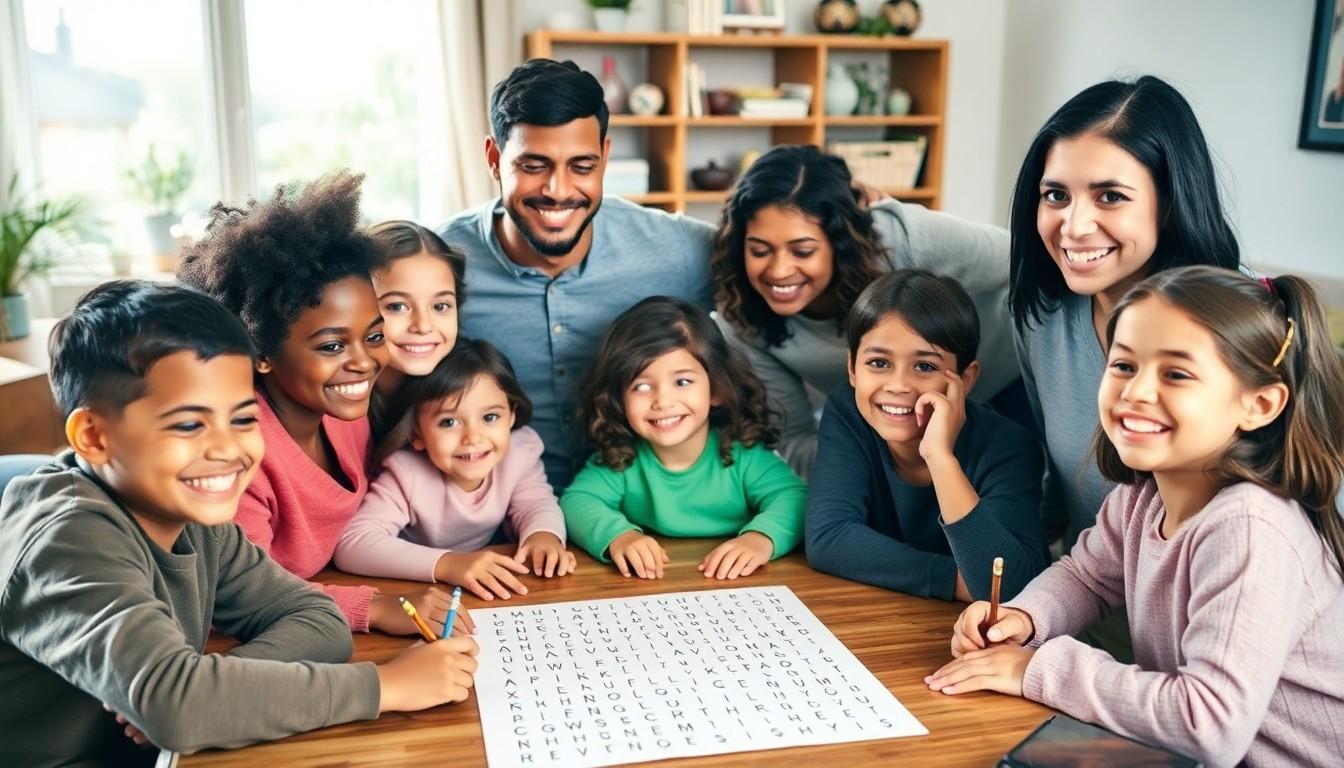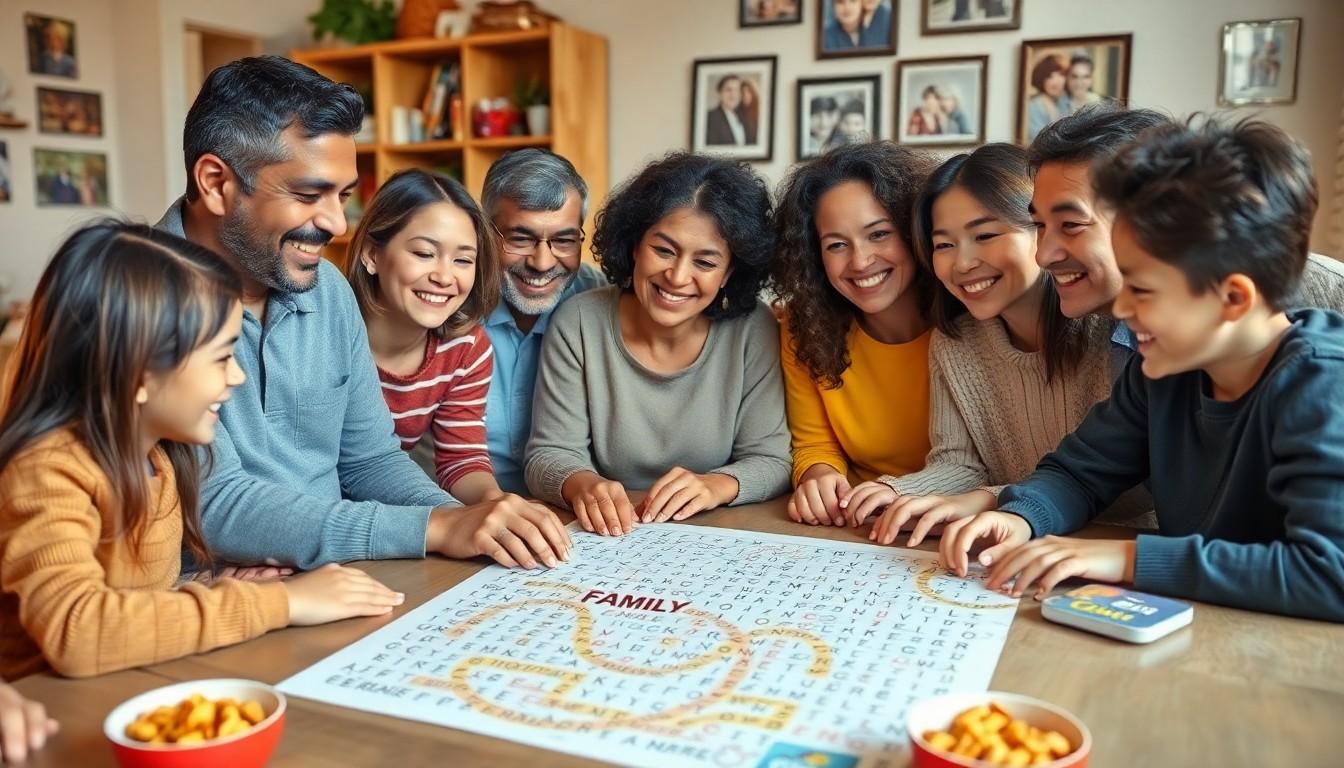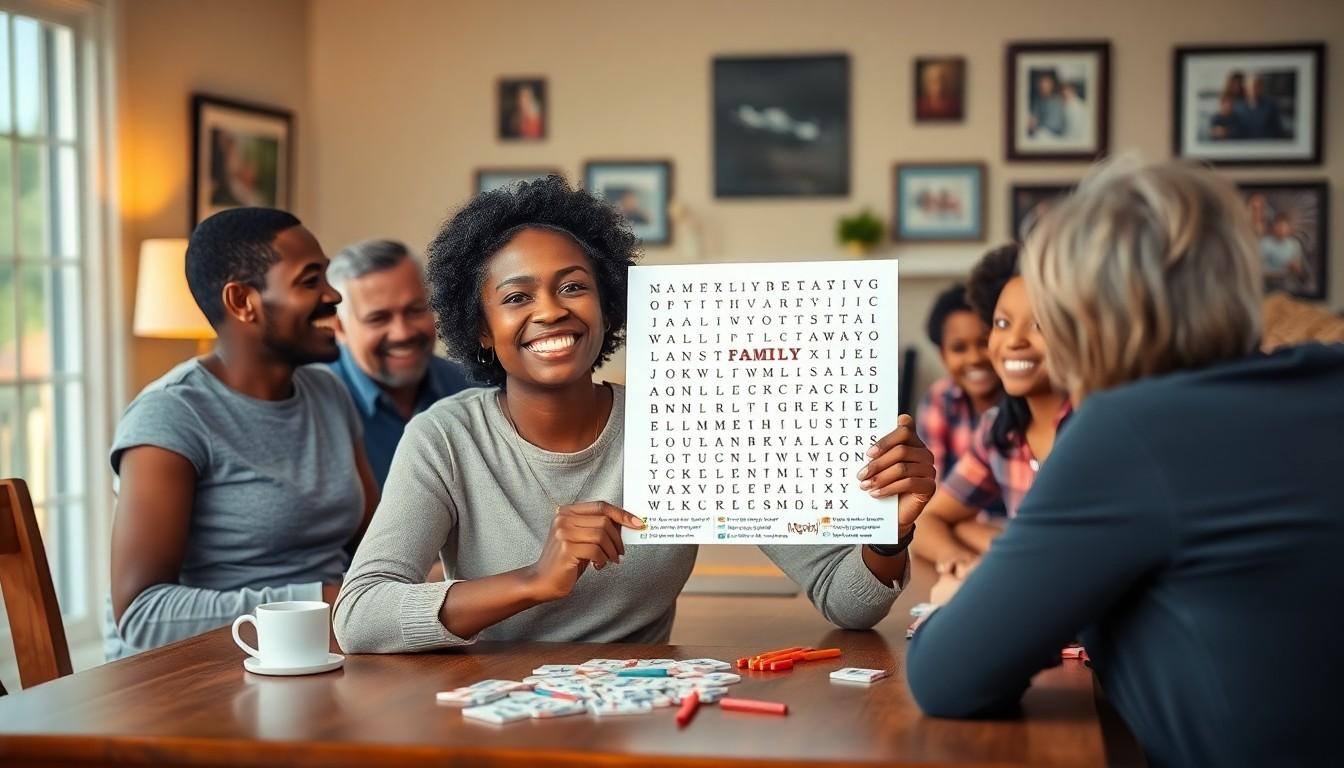Family gatherings can be a mixed bag of laughter, love, and the occasional eye roll. But what if there was a way to turn those awkward silences into a fun-filled activity? Enter the family relations word search! This delightful puzzle not only entertains but also sparks conversations about the quirky connections that bind us together.
Imagine racing against your cousin to find “aunt,” “nephew,” and “second cousin twice removed” while trying not to spill your drink. It’s a hilarious way to bond and reminisce about those legendary family stories. Plus, it’s a sneaky way to keep everyone’s minds sharp. So grab your pencil and get ready to dive into a world where family ties meet puzzling fun. Who knew learning about your relatives could be this entertaining?
Family Relations Word Search
Family relations word search puzzles provide an engaging way to connect with relatives during gatherings. These puzzles include terms like “cousin,” “grandparent,” and “sibling,” creating opportunities for sharing stories that enhance family bonds. Participants can turn the search into a friendly competition, fostering laughter and engagement while locating specific words.
People of all ages enjoy these puzzles, making them suitable for family members from children to grandparents. The simplicity of the format allows everyone to participate, strengthening intergenerational connections. When family members collaborate, they share insights and reminisce about shared experiences, enriching the overall environment.
Promoting cognitive skills adds another benefit to this activity. As participants search for words, they engage in critical thinking and problem-solving, keeping their minds sharp. Family relations word searches can also be customized to include unique family terms and names, making the experience personal and memorable.
Different versions of these puzzles exist. Some may feature a straightforward grid layout, while others incorporate themes that match family gatherings, such as holidays or reunions. Utilizing family history as a basis for puzzles can further enhance interest and engagement.
Ultimately, family relations word search puzzles combine enjoyment with learning. They serve as tools for discussion and connection, igniting conversations about family trees and legacies. This enriching activity not only entertains but also fosters a sense of togetherness among relatives.
Benefits of Family Relations Word Search

Family relations word searches encourage various benefits, enriching family gatherings and enhancing connections among relatives.
Cognitive Development
Engagement with word searches promotes cognitive skills. Participants enhance their critical thinking while searching for specific terms. Problem-solving abilities sharpen as they navigate grids to find family-related words. This activity stimulates memory retention, aiding in recalling names and relationships. Puzzles can be customized with unique family terms, increasing relevance to participants. Families create a stimulating environment that fosters mental agility across all ages.
Family Bonding
Family relations word searches strengthen bonds among relatives. Together, members collaborate to find terms like “sibling” and “niece,” sparking meaningful conversations. Participants share stories while racing to complete the puzzle, generating a sense of friendly competition. Such interactions bridge generational gaps, allowing younger family members to learn about older generations. The shared experience fosters a deeper understanding of family history, enriching connections and creating lasting memories.
How to Create a Family Relations Word Search

Creating a family relations word search engages everyone in the family for a memorable gathering. Follow these steps for an enjoyable experience.
Begin by compiling a list of essential family terms. Choose words like “mother,” “father,” “cousin,” or “niece.” Consider including unique names that reflect family dynamics, such as specific grandparents’ names or family nicknames. Aim for variety with shorter terms like “aunt” paired with longer ones, ensuring a balanced challenge. Target selections suitable for all ages, making it enjoyable for children and adults alike. Finally, prioritize words that resonate with family stories or connections, enriching the experience and sparking conversations.
Designing the Puzzle
Designing the puzzle involves creating an engaging grid. Start by determining the grid size, considering how many terms you’ve selected. Use graph paper or online tools for ease and accuracy. Position each word in various orientations, including horizontally, vertically, and diagonally to increase difficulty. Fill remaining spaces with random letters to conceal the terms effectively. Before finalizing, double-check for overlapping words and ensure the layout is visually appealing. This attention to detail captivates participants, enhancing their word search experience and prompting joyful interactions.
Tips for Solving Family Relations Word Search
Solving family relations word searches can be enjoyable, especially with the right strategies in place. Employing effective techniques enhances the overall experience and supports finding terms quickly.
Strategies for Attention
Focus on the first letter of each word to streamline searches. Quickly scanning the grid for these letters makes identification easier. Group similar terms together mentally, reinforcing memory connections. Utilizing different angles improves the ability to spot words in various orientations. Taking breaks prevents fatigue, keeping the mind fresh and engaged. Additionally, multiple attempts at a single word can help if initial searches fail. These strategies enhance cognitive engagement, making the puzzle-solving process more efficient.
Group Activities
Involving family members in the word search encourages collaboration. Assign roles, such as a word “spotter” and a “checker,” to create a dynamic team atmosphere. Sharing discovered words sparks discussions about family memories linked to those terms. Setting a timer introduces a friendly competitive edge, making the activity more thrilling. Additionally, participants can create their own custom puzzles, enriching the group’s connection to family history. Celebrating completed searches fosters a sense of achievement and reinforces family bonds. These group activities transform word searches into meaningful experiences.




